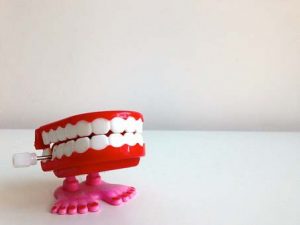by virtualworks | Oct 23, 2022 | Business, business growth, Leadership, Marketing, Mastery, office management, Productivity, Remote Office Management, Time Management, Virtual Assistant, working from home, working remotely
 Have you ever come out of a meeting, or the end of day and caught yourself in a mirror and realized that you have a piece of schmutz in your teeth, or your cow-lick is asserting its personality again? We have all had that moment when we think “WHY DIDN’T SOMEONE TELL ME?”
Have you ever come out of a meeting, or the end of day and caught yourself in a mirror and realized that you have a piece of schmutz in your teeth, or your cow-lick is asserting its personality again? We have all had that moment when we think “WHY DIDN’T SOMEONE TELL ME?”
As small business owners we can spend so much time in the tasks that we forget what our goals are. If only gauging how well we are running our business is as simple as looking in the mirror! When it comes to taking your business to the next level, a level of self-awareness is required to assess the needs of your business and how your management style can be maximized for growth.
Take a look at your business and your strengths and values (and be honest about it!). Determine what makes sense for you to do and what is reasonable for someone else to take care of.
To identify exactly what you need, do the following for one work-week:
- As you go through each workday, write down the daily tasks that you dislike doing (or, put another way, make a list of the things you do last because you keep putting them off)
- Write down all the projects you’ve “had on the back burner”; those projects and tasks that never seem to get done week after week, month after month.
- Write down all the things you spend too much time doing (why are you really in the office all the time?).
- Write down all the things you wish you had more time to do.
- Write down all the tasks you must do as a business owner.
Ask people you know to work through this with you as they may provide a different perspective. There might be metaphorical spinach in your teeth that they are begging for the chance to tell you about!
Don’t think about how much it will cost or how long to get these resources in place. Just think about you for now and ask yourself what you need to do in order to move your business forward.
Need help? Click here to get my free e-book to help you gain clarity.
by virtualworks | Sep 25, 2022 | Business, business growth, Leadership, Marketing, Mastery, Outsourcing, Productivity, remote meetings, Remote Office Management, Team Work, Time Management, Travelling, working remotely
 Remote support was pretty much non-existent 25 years ago. Facebook didn’t exist 20 years ago. Times, they are a’changing…
Remote support was pretty much non-existent 25 years ago. Facebook didn’t exist 20 years ago. Times, they are a’changing…
Remote work has grown in popularity over the last 5-10 years and more so with the pandemic we’ve been dealing with the past 2+ years, it’s become a necessity. The Internet and evolving technology drive the ability for remote support workers to be just that: “remote”. That can mean being remote locally or remote internationally; it can mean telecommuting for employees or freelancing as a contractor from anywhere on the planet for clients anywhere on the planet. The world has become larger and smaller at the same time: larger because remote working can easily tap into new markets around the world and increase competition (which can be a good thing); smaller because it takes less time and cost to do so.
It wasn’t too long ago that the average person didn’t know too much about video meetings or needed an international calling plan. Today, companies are expanding their enterprises globally without ever leaving their hometown; hiring remote employees who are local to new markets gives enterprise an edge. While this can be a very cost-effective way to conduct business, it takes more than just hiring people to work for you; it takes a thorough review of all factors that come into play for all stakeholders. It’s important to know the legal and accounting aspects of these relationships as well as being mindful of language barriers of both employees and clients.
Even in spite of the pandemic, the world is open for new opportunities. With ever-evolving technology and lower costs to connect, open your mind to the endless possibilities that are happening around the world and around the clock.
by virtualworks | Aug 28, 2022 | Brand Image, Case Study, Customer relationships, daily lfe, Marketing, Mastery, Travelling
 “Before the pandemic, I was making arrangements for my summer holiday to the U.K. Among those many arrangements and bookings I had to make, two stood out in my mind – each of which are a great example of customer loyalty, how to build it and how to lose it quickly.
“Before the pandemic, I was making arrangements for my summer holiday to the U.K. Among those many arrangements and bookings I had to make, two stood out in my mind – each of which are a great example of customer loyalty, how to build it and how to lose it quickly.
The first experience was with a large, well known mail order firm in the U.S. I had purchased travel clothing for my trip and not everything fit well so I had to return a few things. The return slip was easy to complete and advise what I wanted done with the returned items.
Rather than me hunting all over the house for a copy of their catalogue, they included one with the order so it would be easy to find substitutions if I wanted. They included a pre-printed return label within its own folded card with instructions. These few easy to do steps made the return of the clothing really easy and hassle free to the extent that I just had to fill in the sender address on the label, tape up the box and drop off at my local post office. It was almost a joy to return the things I didn’t want. Will I purchase from them again? Absolutely!
The other experience was with a tour operator for an excursion of a now well-known castle in Britain. I had made the booking back in March and I was so happy that the date was available as it was going to be one of my last days in Britain – I really lucked out! I was so looking forward to it even though it was 6 months away.
In May, I received a notice by email that my booking was cancelled and asked what other date would I like to choose? I replied by saying it was the only date I was available for the tour and requested that my money be refunded. I waited a week and sent them a reminder. A couple of days after that, they requested my PayPal account address. A week later I checked my account and there was considerably less money in my account than the original amount I paid. There was no explanation by email for the difference. I researched their website to see if there was a cancellation policy, none to be found. I emailed again advising what I had paid and what I had received as a refund and requested they remit the difference immediately. Will I purchase from them again? Absolutely not! Will I recommend them? Not a chance.
In both these situations, the return process is handled by using a few simple steps to keep the customer (me) happy and coming back. One of them has it perfected; the other has a lot to learn!
Do you have any customer loyalty examples to share that we can all learn from? Please comment and feel free to social share below. Thanks!
by virtualworks | Jul 3, 2022 | Business, business growth, Productivity, Social Media, tech tips, Time Management, working remotely

Our guest blogger is Loreto Cheyne of Lola Design. Summer is a great time to work on your branding and marketing gear, getting ready for the busy 4th quarter…
After what seemed like an endless winter, summertime’s here, and that means joining colleagues at a patio, leaving the office early, and honing your BBQ skills. It’s a nice fantasy-but if you’re a business owner, it means if there’s any downtime, you’ll likely be catching up on the marketing projects you had hoped to tackle much earlier in the year.
You may not have days on end to devote to marketing catch-up. But if you can organize your projects and time, here’s three things that will let you communicate a little easier in the fall and have you ready for more marketing and networking:
1) Update your business cards. I’m always going on about the importance of your business cards, and with good reason. If social media is part of your marketing mix, be sure to have your contact info on your business card. You can:
- add the actual URL (ex. www.linkedin.com/in/loretocheyne)
- simply use the social media icon (blue “bird” for Twitter)
- incorporate a QR code that when scanned takes readers to your blog.
2) Take a look at your marketing calendar and review major events coming in the fall. If you have a conference or a tradeshow you have already committed to, this is the time to do the prep work. If your tradeshow is October 1, don’t wait until September 25 to get your signage ready, or your rack cards, or sellsheets. Get ahead of the game now so you can do it right, proof properly and avoid rush charges. That way they are done, printed, and you can forget about them.
3) Do a logo inventory. Is your logo still working hard for you? Because if it isn’t, now is the time to alter it, or completely redo it (not a week before your new ad campaign is launched). Find a designer you can work with (I will be glad to set up a consultation with you) and be sure to discuss your needs, likes, dislikes, deadlines and budget. Be realistic. Make sure your logo is created as a vector file, which will give you the most versatility over the long run (that’s an Illustrator .eps or .ai file).
These three marketing communication tips should give you plenty to fill up those pockets of “spare time” you may have this summer!
Loreto Cheyne is the principal and owner of Lola Design, an Ottawa-based graphic design studio. To book your complimentary consultation, email loreto@loladesign.ca
Website:www.loladesign.ca
Blog:www.loladesing.ca/blog
by virtualworks | Mar 13, 2022 | Customer relationships, Leadership, Marketing, Mastery, Productivity, Social Media, working remotely

Just a little reminder today that the art of the follow up is now easier than ever. Why? Because of our ever-increasing virtual world of electronic media, social media, video, audio, smart phones and goodness knows what else will be available tomorrow!
Add these resources to what were used even 10 years ago, and there really is no reason not to follow up with your donors and sponsors for their contribution and to keep in touch with your members.
It’s so easy for organizations to post to their donors’ and sponsors’ Facebook feeds: send them a text message, record a personal video or send an email. On top of this you can use Skype, Facebook or Google Chat or Hangouts to connect and have a virtual coffee break to check in. AND add to this the more traditional ways of keeping in touch with cards, notes and gifts in the regular “snail” mail, there’s no excuse not to keep in touch with your networks. Personally, I like to mail hand-written cards and gifts. From a marketing perspective, there’s nothing more alluring than ‘lumpy’ mail, so include a pen, a block of sticky notes or a little gift with a card; the chances of that piece of mail being opened will increase exponentially. Even if you just write thank-you (for your time, for your call, for your donation, for your sponsorship…), doing so will go a long way. The combinations you can use to keep in touch are endless!
While most organizations spend time recruiting potential members, sponsors and donors, what about your current members, sponsors and donors? Do you ever thank them, take them out to lunch or send them a birthday card or gift? Your current database of contacts are your biggest fans and the most likely to refer. Stay connected with them and nurture those relationships! It doesn’t have to cost a lot of money – it’s the thought that counts.
 Have you ever come out of a meeting, or the end of day and caught yourself in a mirror and realized that you have a piece of schmutz in your teeth, or your cow-lick is asserting its personality again? We have all had that moment when we think “WHY DIDN’T SOMEONE TELL ME?”
Have you ever come out of a meeting, or the end of day and caught yourself in a mirror and realized that you have a piece of schmutz in your teeth, or your cow-lick is asserting its personality again? We have all had that moment when we think “WHY DIDN’T SOMEONE TELL ME?”




Recent Comments